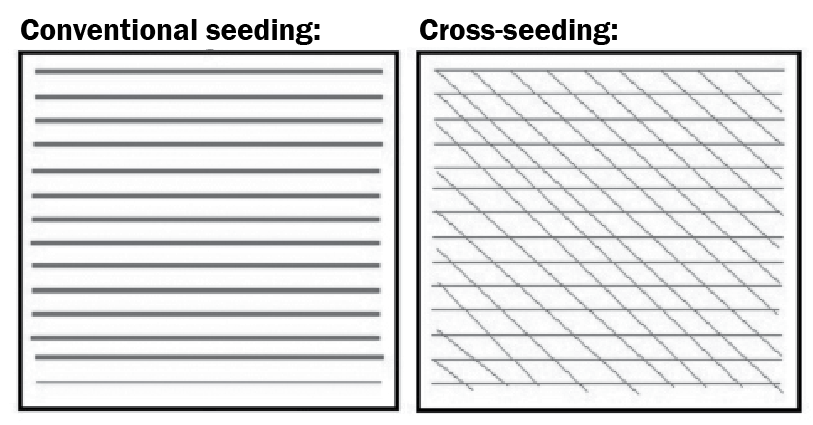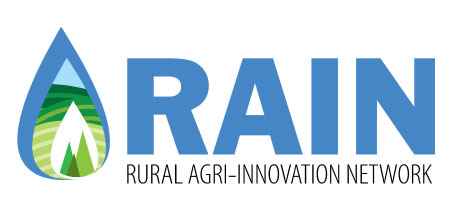The Rural Agri-Innovation Network (RAIN) will be leading a research project in 2017 to investigate whether cross-seeding forages is an economically viable practice for northern Ontario. RAIN is partnering with researchers from the Thunder Bay Agricultural Research Station, the Emo Agricultural Research Station, and the Kapuskasing Demonstration Farm to expand the reach of this project across the north.
Cross-seeding (also called cross-drilling) is a technique for establishing a crop where half the seed is planted in a conventional drive pattern using a seed drill. The other half of the seed is drilled at a 45 degree angle to the original pass in order to achieve better ground coverage. Better coverage can help reduce soil erosion and assist sown forage crops out-compete weeds, resulting in better quality and higher yielding forage. This technique may have a place in northern livestock systems where forages are established as long-term stands, and purchasing an implement designed specifically for forages does not make economic sense. While grain drills are often readily available, the row spacing is generally wider than recommended for establishing perennial forages. Cross-seeding changes the spatial distribution of a crop and may overcome these shortfalls.

Figure 1: Illustration comparing drive pattern and seeding rate for conventional and cross-seeding methods. Note that line thickness indicates seeding rate on each pass.
Cross-seeding does not use any more seed than conventional seeding methods; the difference is that planting requires two passes of machinery. The United Kingdom’s Agriculture and Horticulture Development Board report that up to 80 per cent of soil compaction caused by machinery occurs during the first pass. Compaction risk should not be significantly increased by cross-seeding. The largest disadvantage to cross-seeding is the increased costs of fuel, machinery, and labour to sow the crop.
This research project aims to determine whether the yield and quality advantages of cross-seeding are large enough to overcome the increased establishment costs involved.
We are looking for farmer cooperators to assist with this project. If you will be establishing a new hay field or pasture with a seed drill in 2017 and would like to be involved, please contact the partner researcher in your district for more information.
District Algoma/Manitoulin: Christine O’Reilly
P. (705) 942-7927 x3147 Email: coreilly@ssmic.com
District Cochrane: André Robichaud
P. (705) 337-4453 Email: andre.robichaud@kapuskasing.ca
District Rainy River: Kim Jo Bliss
P. (807) 482-2354 Email: kbliss@uoguelph.ca
District Thunder Bay: Tarlok Sahota
P. (807) 475-1373 Email: tarloksahota@tbaytel.net
This project was funded in part through Growing Forward 2 (GF2), a federal-provincial-territorial initiative. The Agricultural Adaptation Council assists in the delivery of GF2 in Ontario.

